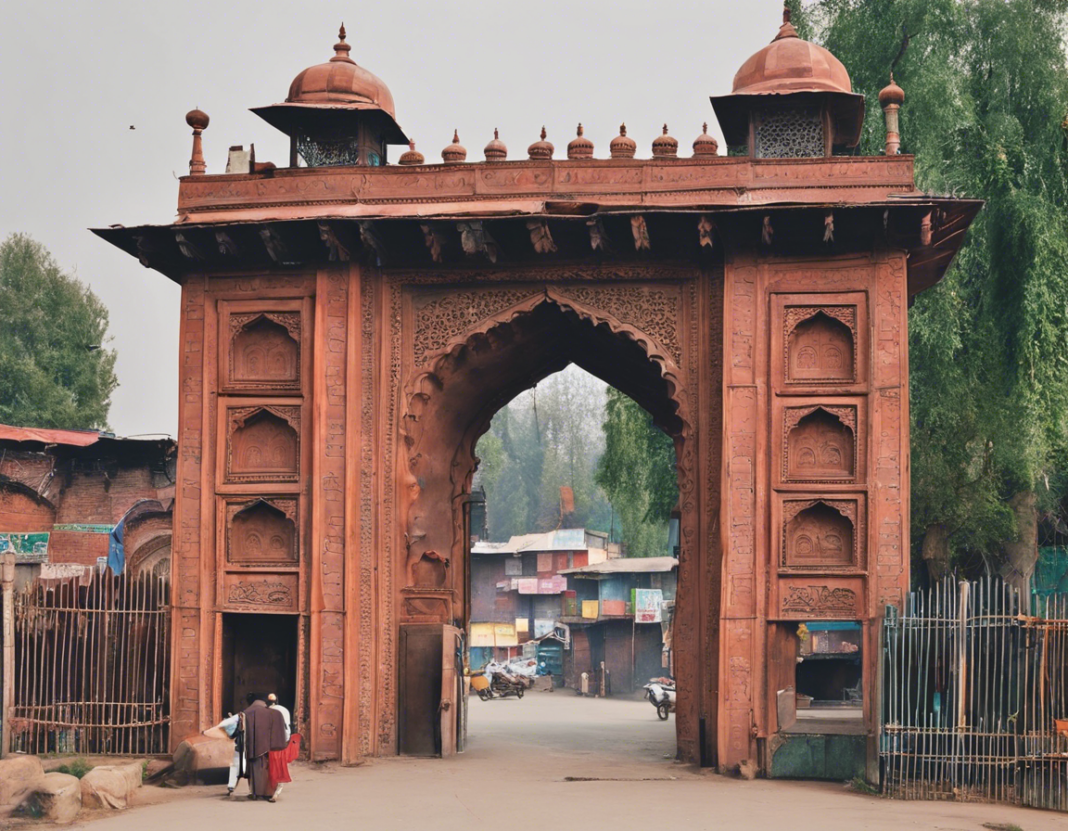Nestled in the heart of Old Delhi lies a treasure trove of history, culture, and heritage – Kashmiri Gate. Named after the magnificent landmark gate built by Shah Jahan in the 17th century, this area holds a special place in the heart of every Delhiite. While it often remains overshadowed by the bustling markets of Chandni Chowk and the historical significance of Red Fort, Kashmiri Gate has a charm and allure all its own.
The History of Kashmiri Gate
Kashmiri Gate holds a significant place in Indian history, serving as one of the original gates of the walled city of Shahjahanabad, which was the capital of the Mughal Empire. The gate was originally known as the “Gadhi Darwaza” for its grandeur and was later renamed “Kashmiri Gate” due to the road that led from there to the Kashmir Valley. During the revolt of 1857, the gate witnessed fierce battles between Indian freedom fighters and the British forces, leaving behind scars that still resonate in its walls.
Cultural Heritage and Architecture
One of the most striking features of Kashmiri Gate is its architectural charm. The area is dotted with historical buildings, mosques, and havelis that showcase a blend of Mughal, British, and Indian architectural styles. The St. James Church, built by Colonel James Skinner in the 19th century, is a beautiful example of colonial architecture and stands as a testament to the area’s rich past.
Hidden Gems and Local Delights
Kashmiri Gate is a treasure trove of hidden gems waiting to be explored. From bustling bazaars selling traditional handicrafts and artifacts to hidden eateries serving authentic Kashmiri cuisine, the area offers a glimpse into a world that is steeped in tradition and culture. Nehru Vihar, a residential area near Kashmiri Gate, is known for its vibrant street food scene, with local vendors dishing out mouth-watering delicacies that are a treat for the taste buds.
Exploring the Surroundings
Kashmiri Gate serves as a gateway to some of Delhi’s most iconic landmarks, including the Red Fort, Jama Masjid, and Chandni Chowk. A walk through the narrow lanes of the area will transport you back in time, allowing you to soak in the rich history and culture that permeate every corner. The Feroz Shah Kotla ruins, located nearby, offer a glimpse into the ancient past of Delhi and are a must-visit for history enthusiasts.
Preserving the Legacy
While Kashmiri Gate has managed to retain its old-world charm, rapid urbanization and development pose a threat to its cultural heritage. Efforts are being made to preserve the historical buildings and monuments in the area, with organizations working towards heritage conservation and sustainable development. It is essential for both locals and tourists to appreciate and protect the legacy of Kashmiri Gate for future generations to enjoy.
FAQs about Kashmiri Gate:
1. What is the best time to visit Kashmiri Gate?
The best time to visit Kashmiri Gate is during the winter months (October to March) when the weather is pleasant and ideal for exploring the area on foot.
2. Are there any guided tours available for exploring Kashmiri Gate?
While guided tours specifically for Kashmiri Gate may not be available, there are heritage walks organized in Old Delhi that cover significant landmarks including Kashmiri Gate.
3. What are some must-try dishes in Kashmiri Gate?
Visitors to Kashmiri Gate must try the authentic Kashmiri Wazwan dishes such as Rogan Josh, Yakhni, and Dum Aloo that are available at local eateries in the area.
4. Is Kashmiri Gate easily accessible by public transportation?
Kashmiri Gate is well-connected by Delhi Metro, buses, and auto-rickshaws, making it easily accessible from various parts of the city.
5. Are there any souvenir shops in Kashmiri Gate?
There are several souvenir shops in and around Kashmiri Gate that sell traditional handicrafts, artifacts, and local merchandise for visitors to take home as mementos.
Immerse yourself in the charm and allure of Kashmiri Gate and discover the hidden gem that lies at the heart of Delhi. Explore its rich history, vibrant culture, and timeless beauty, and create memories that will last a lifetime.






